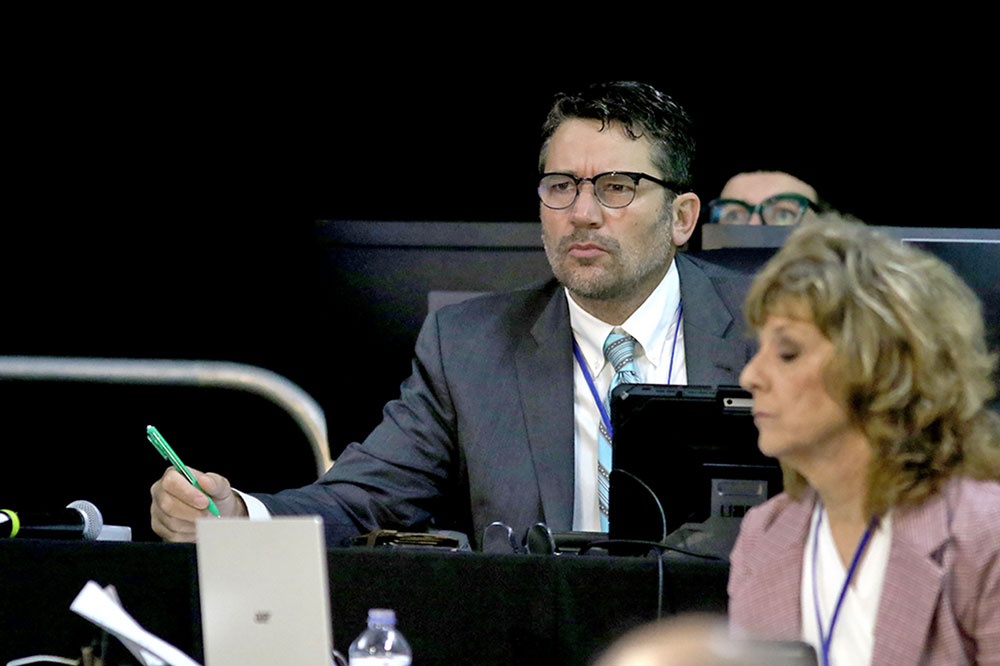U.S. Ag Secretary Vilsack declares much of eastern Iowa under drought disaster
By Bob Steenson, bsteenson@charlescitypress.com
Because of the ongoing drought in eastern Iowa, U.S. Secretary of Agriculture Tom Vilsack has declared 24 Iowa counties including Floyd County as natural disaster areas.
The proclamation sent to Gov. Kim Reynolds earlier this week makes farmers in those counties and contiguous counties eligible to apply for emergency assistance, Vilsack’s letter says.
The designated counties include Floyd and its surrounding counties of Bremer, Butler, Cerro Gordo, Chickasaw, Franklin, Howard, Mitchell and Worth counties, along with 34 other primary or contiguous Iowa counties and six contiguous counties in Minnesota and Wisconsin.
The designation enables farmers in these areas to apply for emergency loan assistance provided by the Farm Service Agency, if they meet eligibility criteria.
The Federal Code on disaster designations says that if any portion of a county is located in an area that the U.S. Drought Monitor has designated as severe drought (D2) for at least eight weeks during the growing season of affected crops, or extreme drought (D3) or exceptional drought (D4) for any part of the growing season, the county will be designated a disaster area by the secretary.
Even after recent rain, including almost 2½ inches in Charles City on April 1, Floyd County remains in an area of the state that has been categorized as D3, extreme drought, since much of last year, according to the U.S. Drought Monitor and its latest map released Thursday, April 4.
After the second driest February on record, at the end of March Iowa’s Drought Plan showed overall conditions have improved in the state, with areas of northeast and southern Iowa maintaining a drought watch designation. Recent rainfall amounts indicate conditions may continue to improve throughout the spring.
“March begins a stretch of normally wet months in Iowa, so a wetter than normal March is a good thing,” said Tim Hall, the DNR’s Hydrology Resources Coordinator. “Four years of drought will not be eliminated in just a month or two. March through June are critical months for water resources in Iowa, and a wetter than normal start to this time period is encouraging.”
Over the past year, precipitation in Iowa stands at 7.5 inches below normal, and the state has now seen 204 consecutive weeks of dry or drought conditions. While recent rains have improved conditions, it will take a much longer period of above-normal rainfall in the state to eliminate drought conditions, Hall said.
Average statewide precipitation levels usually increase from two inches in March to over five inches in June. The next few months are key to reducing drought conditions across Iowa. A dry spring would likely result in quickly deteriorating conditions and increased drought.
According to the National Weather Service, the driest area is in northeast Iowa where precipitation deficits since April 2023 range from 12.67 inches near Ionia to 20.17 inches in Charles City.
Most of the state except for northwest Iowa remains in a drought classification ranging from abnormally dry to extreme drought. No part of the state is currently in the highest drought category, exceptional drought.
Vilsack’s message said the FSA evaluates each loan application based on the extent of production losses and the financial standing of the applicant, and local FSA offices can provide more information.
Farmers have eight months from the date of the secretarial disaster declaration on April 1 to apply for emergency loans.
Iowa counties and contiguous counties affected are:
Primary Iowa counties – Benton, Black Hawk, Bremer, Buchanan, Butler, Cedar, Cerro Gordo, Chickasaw, Clayton, Delaware, Fayette, Floyd, Franklin, Howard, Iowa, Johnson, Jones, Linn, Mitchell, Poweshiek, Tama, Washington, Winneshiek, Worth.
Contiguous Iowa counties – Allamakee, Clinton, Dubuque, Grundy, Hamilton, Hancock, Hardin, Henry, Jackson, Jasper, Jefferson, Keokuk, Louisa, Mahaska, Marshall, Muscatine, Scott, Winnebago, Wright.
Adjacent state contiguous counties – Minnesota: Fillmore, Freeborn, Houston and Mower; Wisconsin: Crawford and Grant.










Social Share